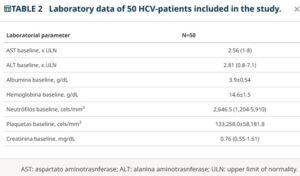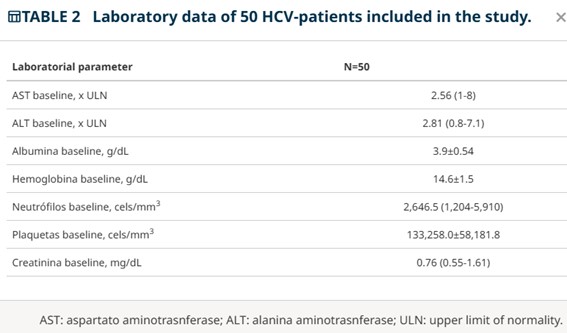HIGHLIGHTS
- The study evaluated hepatic fibrosis using acoustic radiation force impulse (ARFI) before and after successive treatments for chronic HCV.
- Adult patients with chronic HCV were submitted to triple therapy with first-generation protease inhibitors.
- The non-responders underwent re-treatment with interferon-free direct-acting antiviral agents (DDAs). ARFI was used to assess hepatic stiffness before and after the first treatment and for re-treatment with DDAs.
- ARFI values decreased significantly after treatments and for patients who did not reach sustained virological response (SVR). Before re-treatment, non-responders again had elevated ARFI values, dropping after SVR was achieved in 100% of patients. Laboratory parameters such as AST and ALT were directly correlated to ARFI.
- The reduction of elastography parameters seems to be related to a decrease in hepatic inflammation rather than a reduction in fibrosis per se.
ABSTRACT – Background
Liver biopsy (LB) is still the gold standard method for assessing hepatic fibrosis (HF), associated diseases, and liver inflammation. Nowadays, noninvasive techniques such as Acoustic radiation force impulse (ARFI) elastography have been introduced instead of liver biopsy. However, there are controversies about the time it should be performed after treatment for hepatitis C virus (HCV).
Objective: To evaluate hepatic fibrosis using ARFI technology before and after successive treatments for chronic HCV.
Methods: We prospectively included 50 adult patients with chronic HCV (genotype 1). Patients were first submitted to triple therapy with first-generation protease inhibitors (boceprevir and telaprevir) at the hepatitis division of the Gastroenterology Department of the Federal University of São Paulo. The non-responders underwent re-treatment with interferon-free direct-acting antiviral agents (DDAs – sofosbuvir associated with daclatasvir or simeprevir). Assessment of hepatic stiffness by ARFI was performed before and after the first treatment and before and after the re-treatment with DDAs.
Results: ARFI values decreased significantly after treatments. In patients on first-generation protease inhibitor therapy and achieving sustained virological response (SVR), ARFI decreased from 2.41±0.58 pre-treatment to 2.02+/-0.58 (P<0.042) post-treatment. In patients who did not reach SVR, that is, non-responders, a significant reduction was similarly observed (2.39±0.63 to 2.03±0.54; P<0.001 before and after treatment, respectively). Before starting the re-treatment, non-responders had elevated ARFI values again, dropping after SVR following re-treatment (from 2.46±0.57 to 1.45±0.68, P<0.004). Laboratory parameters such as AST and ALT were directly correlated to ARFI elastography.
Conclusion: The evaluation of hepatic elastography by the ARFI method before and after (6 – 9 months) successive treatment of hepatitis C in responders and non-responders led to the conclusion that the reduction of elastography parameters seems to be related to a decrease in hepatic inflammation rather than a reduction in fibrosis per se.
AUTORES
XAVIER, João Batista SCHMILLEVITCH, Joel EMORI, Christini UEHARA, Silvia NUNES, Eunice Jadriana FERRAZ, Maria Lucia



